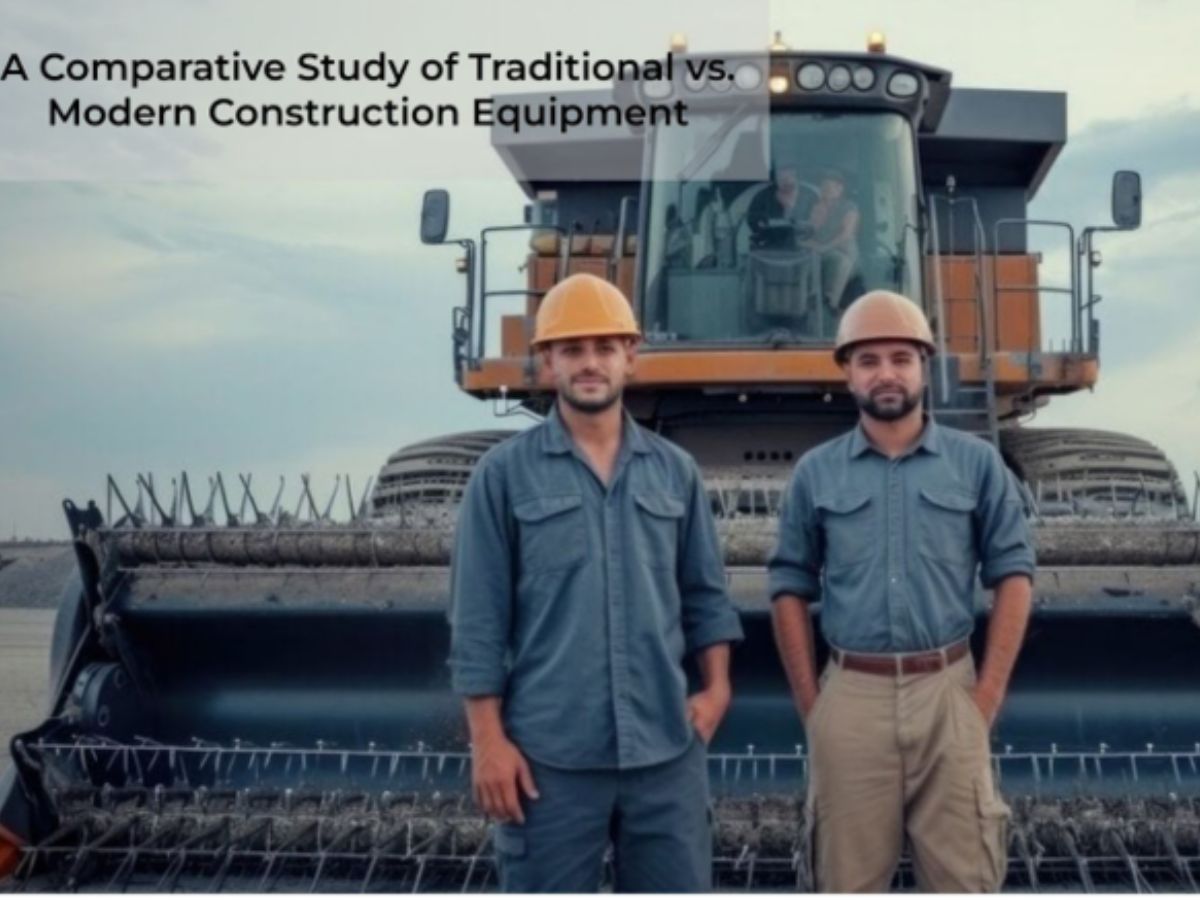A Comparative Study of Traditional vs Modern Construction Equipment

The construction industry has evolved significantly over the past century, largely due to advancements in construction equipment. The shift from traditional to modern machinery has drastically improved construction projects' speed, efficiency, and safety.
In this article, we’ll compare traditional and modern construction equipment, highlighting the key differences and benefits.
Modern Construction Equipment
Modern construction equipment, such as hydraulic excavators, bulldozers, cranes, and backhoes, is designed for greater speed, fuel efficiency, and ease of use. Meanwhile, eco-friendly farming equipment integrates GPS, and AI-powered tools for real-time monitoring and site analysis, enhancing accuracy, reducing errors, and minimizing manual labor on both construction and agricultural projects.
Texas, with its vast landscapes and booming agricultural and construction sectors, presents unique challenges and opportunities for contractors. From the wide-open spaces of rural farms to the rapidly growing urban construction sites, the need for reliable, efficient equipment is key. A john deere dealer texas gives contractors the tools necessary to handle the demands of diverse projects across the state. Whether working in agriculture or on construction sites, the right machinery can help improve overall productivity and reduce operational challenges.
Read Also : Defence Partnership Days: 28-29 November 2024, Read about itTraditional Construction Equipment
Traditional construction tools were primarily manual and labor-intensive. Examples include hand tools like shovels, pickaxes, hammers, and wheelbarrows. Larger machinery, such as steam-powered cranes, bulldozers, and excavators, was often slow, and limited in function. These tools require a significant workforce, and the construction process could be extremely time-consuming, and inefficient, and often lead to delays and higher labor costs.
Maintenance and Durability
Another key aspect to consider when comparing traditional and modern construction equipment is their maintenance requirements and durability. This section could explore how advancements in technology have led to more durable, low-maintenance machinery, reducing downtime and repair costs. It could also compare the long-term reliability of traditional equipment versus the newer machines that often require specialized training or parts for upkeep.
Environmental Impact
With ever-deepening environmental awareness now shaping industries across the world, the construction sector isn't an exception and instead is changing toward the ways of sustainability. It brings out the comparison of conventional compared to modern construction equipment to highlight their impacts on environment through emissions, and eco-friendly inventions.
Read Also : Railways Boosting Connectivity in These Three StatesKey Differences
-
Speed and Efficiency: Modern equipment is faster and can perform tasks in a fraction of the time compared to traditional machinery. A bulldozer, for example, can move large quantities of earth much faster with advanced hydraulics and engines.
-
Labor and Costs: Traditional equipment required more labor-intensive work, which increased overall costs. Modern machinery reduces labor requirements and optimizes the usage of human resources.
-
Safety: Safety has greatly improved with modern equipment, as they come with automatic shutoffs, enhanced control systems, and operator cabins designed to minimize injury.
Conclusion
Even though construction equipment laid the foundation for the modern machinery, modern construction equipment has been totally changed by technology and engineering advances. Modern equipment presents important improvements in speed, and cost effectiveness to transform the way construction projects are carried out.
Read Also : ONGC bagged 'Oil & Gas Exploration Company of the Year - 2023' AwardNews Must Read
- Defence Partnership Days: 28-29 November 2024, Read about it
- HUDCO and NBCC signs Agreement for landmark Noida project
- NBCC received approx Rs. 316 Crore work order
- BEML and MDL signs MoU for developing Marine Applications
- Ravi K Takes Over as Director (Operations) at HAL
- REC Limited bags award in Best Corporate Film category
- Paytm Launches UPI LITE Auto Top-up for Recurring Daily Payments Under Rs 500 with No PIN
- SECI sign MoU with Rajasthan Government for investment in Renewables
- Power Minister inaugurates NTPC Green Hydrogen Mobility Project in Leh
- Rites revises estimate for Northeast Frontier Railway electrification to Rs 532 crore